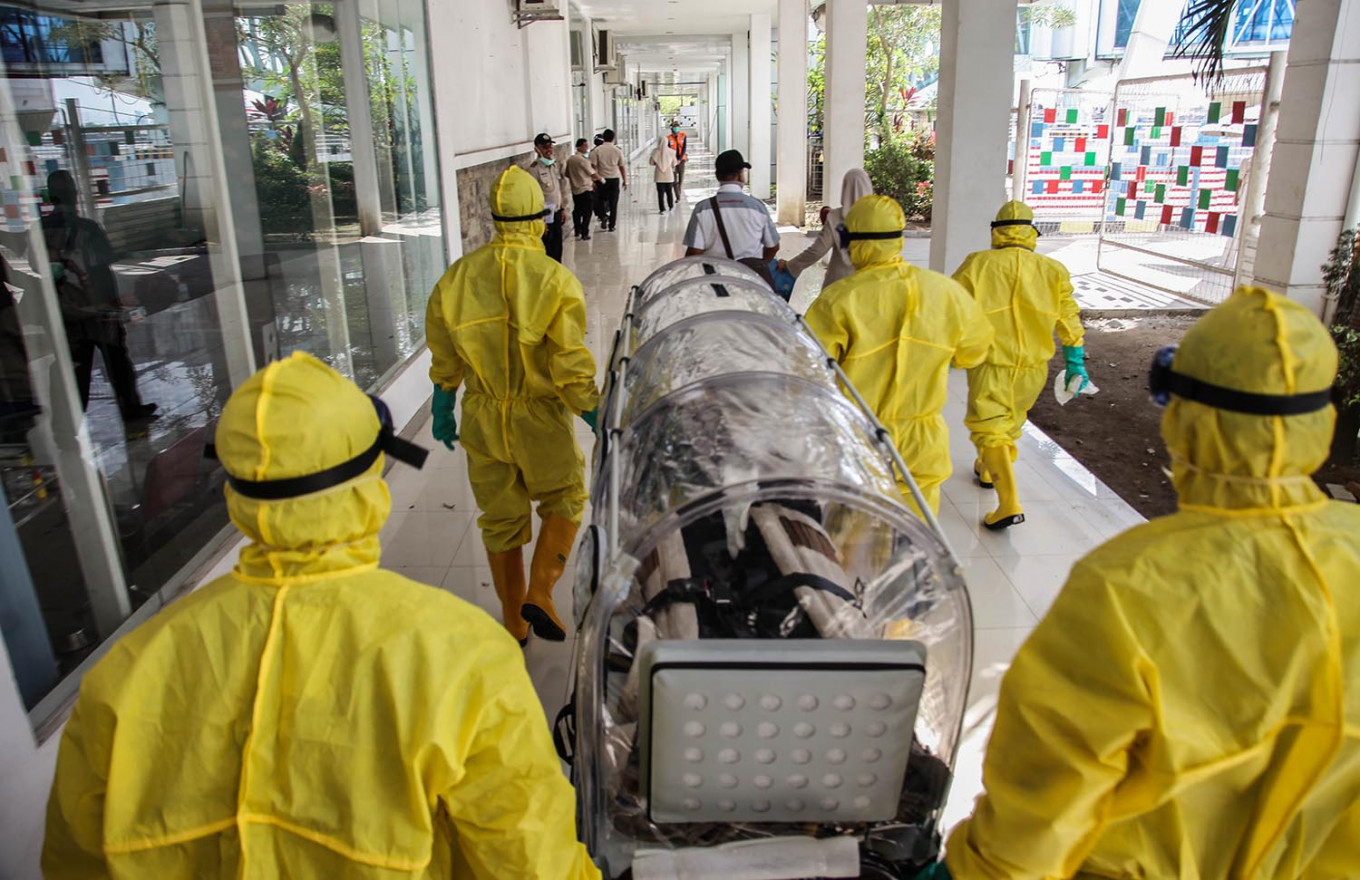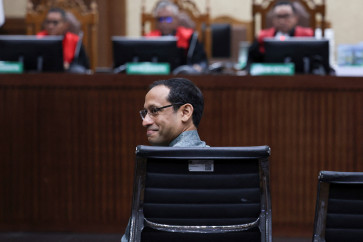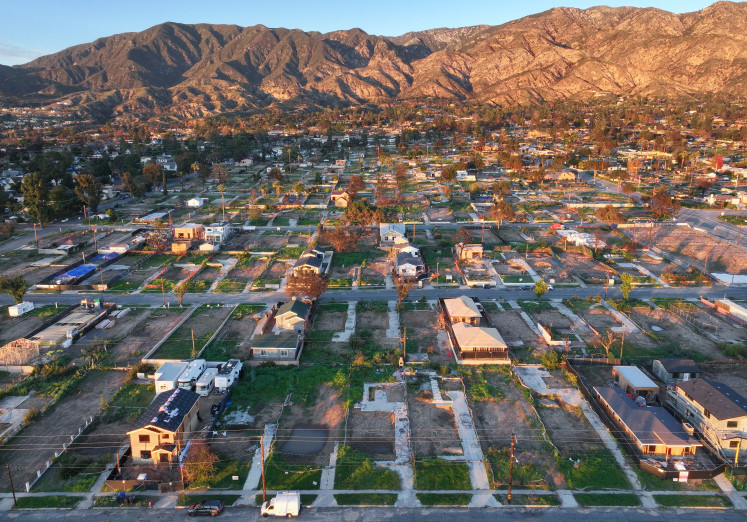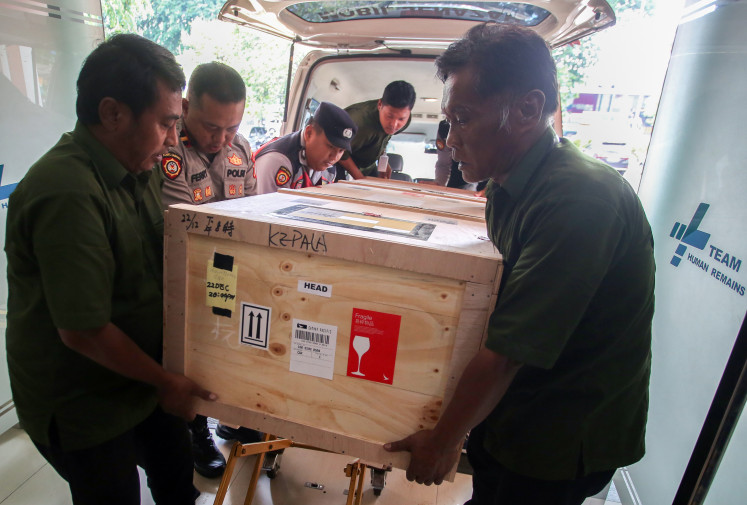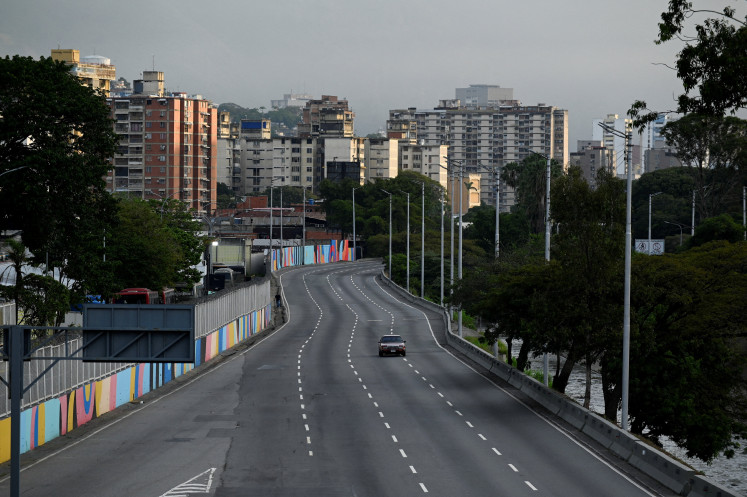Popular Reads
Top Results
Can't find what you're looking for?
View all search resultsPopular Reads
Top Results
Can't find what you're looking for?
View all search resultsPandemic strategy still lacking
Does Indonesia have the robust preparedness and response to combat the pandemic? Do we have disaster-management preparations in place for an epidemic? Are we ready for the coronavirus?
Change text size
Gift Premium Articles
to Anyone
T
he World Health Organization recently declared the novel coronavirus (2019-nCoV) outbreak a global health emergency. Indonesia, along with other countries, has been scrambling to rescue citizens from Wuhan, in China’s Hubei province, the epicenter of the deadly virus.
As the evacuees landed on Natuna Island on Sunday to be quarantined for at least the next two weeks, questions have arisen. Does Indonesia have the robust preparedness and response to combat the pandemic? Do we have disaster-management preparations in place for an epidemic? Are we ready for the coronavirus?
Unless those questions are addressed, it will be arduous for Indonesia to respond to the international challenges and achieve the goal of strengthening competitiveness this year.
Besides increasing morbidity and mortality, the pandemic is considered a shock that could lead to a global economic slump. The Indonesian Travel Agent Association estimates the potential revenue loss in Bali’s tourism sector alone could reach trillions of rupiah by the end of February. Thus the government clearly needs to improve Indonesia’s capability to respond and recover from pandemics.
The government has incorporated priority for disaster risks in the state budget. This year’s budget allocates Rp 5 trillion (US$364.2 million) for emergency management, pre-disaster preparedness, and post-disaster recovery.
Unfortunately, the commitment to mitigate disaster risks has not been fully translated into practical actions for tackling pandemics. The problem may be rooted in the national strategy on epidemics or pandemics, or the lack thereof. One reason may be because disaster-management efforts center on our frequent natural catastrophes.
The 2007 Disaster Management Law defines a disaster as an event that threatens people’s livelihoods, either a result of natural or nonnatural occurrences. However, the guidelines on disasters and emergencies produced and distributed by the National Disaster Mitigation Agency (BNPB) lack recommended actions for citizens in the case of outbreaks.
To increase Indonesia’s preparedness for pandemics, the government must first and foremost acknowledge it as a disaster that can strike at any time. Thus, the government has to build readiness within communities by incorporating pandemic mitigation and preparedness into the National Disaster Management Plan. Since enhancing the capacity to respond to pandemics is a complex and multifaceted process, it should also use a systematic approach that promotes citizens’ participation and partnerships with vast stakeholders.
Hopefully, the BNPB’s national meeting of Feb. 3 to 4 will result in a more robust framework for Indonesia’s disaster-management plan regarding global pandemic threats. That will not only serve as a guide on strategies regarding our heightened vulnerability in this area but also build long-term community readiness in emergencies.
Further, we can look to and learn from countries that managed to overcome epidemics or pandemics such as the Severe Acute Respiratory Syndrome (SARS) and Ebola. Studies have suggested that effective communication is critical in curbing the virus and containing it. Public education in the event of an outbreak could further help citizens develop a realistic perception of infection risks and respond accordingly.
Innovations that can be considered regarding outbreaks include computer models to create effective strategies: the Epi-info VHF to monitor any new virus outbreak, Geographic Information System (GIS) to map the event and remote sensing for detecting pathogens. A drone network can also be utilized for environmental detection, while the drone delivery service may help logistics distribution in affected areas.
All of these efforts require sufficient funds. Hence, in the long term, the government needs to develop an innovative financing plan. Among the alternatives are pandemic insurance, pandemic bonds or other insurance-type processes and cash contributions or binding contingent commitments from donors. A rigorous method of identifying which solution is feasible, cost-effective and practical is needed beforehand.
It is important that all plans to avoid and battle pandemics be carried out under the framework of the National Disaster and Emergency Management to ensure immediate and effective delivery. While we prepare for the worst, we may get the best of this unfortunate situation.
________
Communications strategist of the Finance Ministry. The views expressed are her own.

